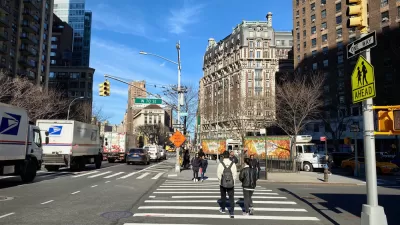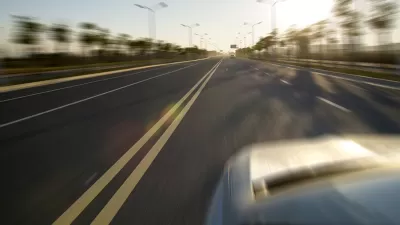Speeding is paying-off in the amount of $15 million for Seattle area schools thanks to speed-enforced cameras, a proven but nonetheless controversial traffic safety tool. Revenue will be used to make walking safer under a proposal by Mayor McGinn.
Seattle Times transportation reporter Mike Lindblom writes that the $14.8 million "would be spent to build safer passages for children walking to more than 20 schools". Facilities would include pedestrian bulb-outs, amber warning lights and speed humps to slow vehicles. What's more, motorists should expect to see more of these cameras.
The Road Safety Initiative would increase four existing speed-enforcement cameras to a possible 15 cameras, where motorists who exceed 20 mph before and after school would be fined $189. About 30 percent of income goes to operate and install the cameras, and city staff to design and oversee walking-safety programs.
The cameras are proving to benefit the drivers as well, notwithstanding the $189 fine. As Councilmember Nick Licata notes in Council Connection, "Ninety-six percent of all violators who have paid their tickets, have not gotten another violation. This is proof that these speed cameras are working to change driver behavior."
Unlike traditional "Safe Routes to School" projects that improve walkablility for schools, Seattle's Road Safety Initiative had a dual focus, exemplified by Dearborn Park Elementary School, writes Lindblom. "New sidewalks were built on one side of South Orcas Street recently, and speed cameras are proposed next year."
The effectiveness of these cameras has not gone unnoticed elsewhere, particularly when it comes to school traffic. Streetsblog Editor-in-Chief Ben Fried wrote last month that "(New York City) Mayor Bloomberg joined Transportation Commissioner Janette Sadik-Khan and NYPD Chief of Transportation James Tuller outside a Crown Heights high school this morning to announce the impending launch of the city’s first automated speed enforcement program." New York speeders will get a break in comparison to their Seattle counterparts - fines will only be $50. No mention of how the revenue will be spent.
Motorists have been know to fight these cameras as they suspect that city government may be using them mainly as revenue measures, as we noted last month in Ohio. The same problem manifests itself with the more common red-light cameras.
FULL STORY: Seattle to step up pedestrian safety near schools

Maui's Vacation Rental Debate Turns Ugly
Verbal attacks, misinformation campaigns and fistfights plague a high-stakes debate to convert thousands of vacation rentals into long-term housing.

Planetizen Federal Action Tracker
A weekly monitor of how Trump’s orders and actions are impacting planners and planning in America.

In Urban Planning, AI Prompting Could be the New Design Thinking
Creativity has long been key to great urban design. What if we see AI as our new creative partner?

Pedestrian Deaths Drop, Remain Twice as High as in 2009
Fatalities declined by 4 percent in 2024, but the U.S. is still nowhere close to ‘Vision Zero.’

King County Supportive Housing Program Offers Hope for Unhoused Residents
The county is taking a ‘Housing First’ approach that prioritizes getting people into housing, then offering wraparound supportive services.

Researchers Use AI to Get Clearer Picture of US Housing
Analysts are using artificial intelligence to supercharge their research by allowing them to comb through data faster. Though these AI tools can be error prone, they save time and housing researchers are optimistic about the future.
Urban Design for Planners 1: Software Tools
This six-course series explores essential urban design concepts using open source software and equips planners with the tools they need to participate fully in the urban design process.
Planning for Universal Design
Learn the tools for implementing Universal Design in planning regulations.
planning NEXT
Appalachian Highlands Housing Partners
Mpact (founded as Rail~Volution)
City of Camden Redevelopment Agency
City of Astoria
City of Portland
City of Laramie




























